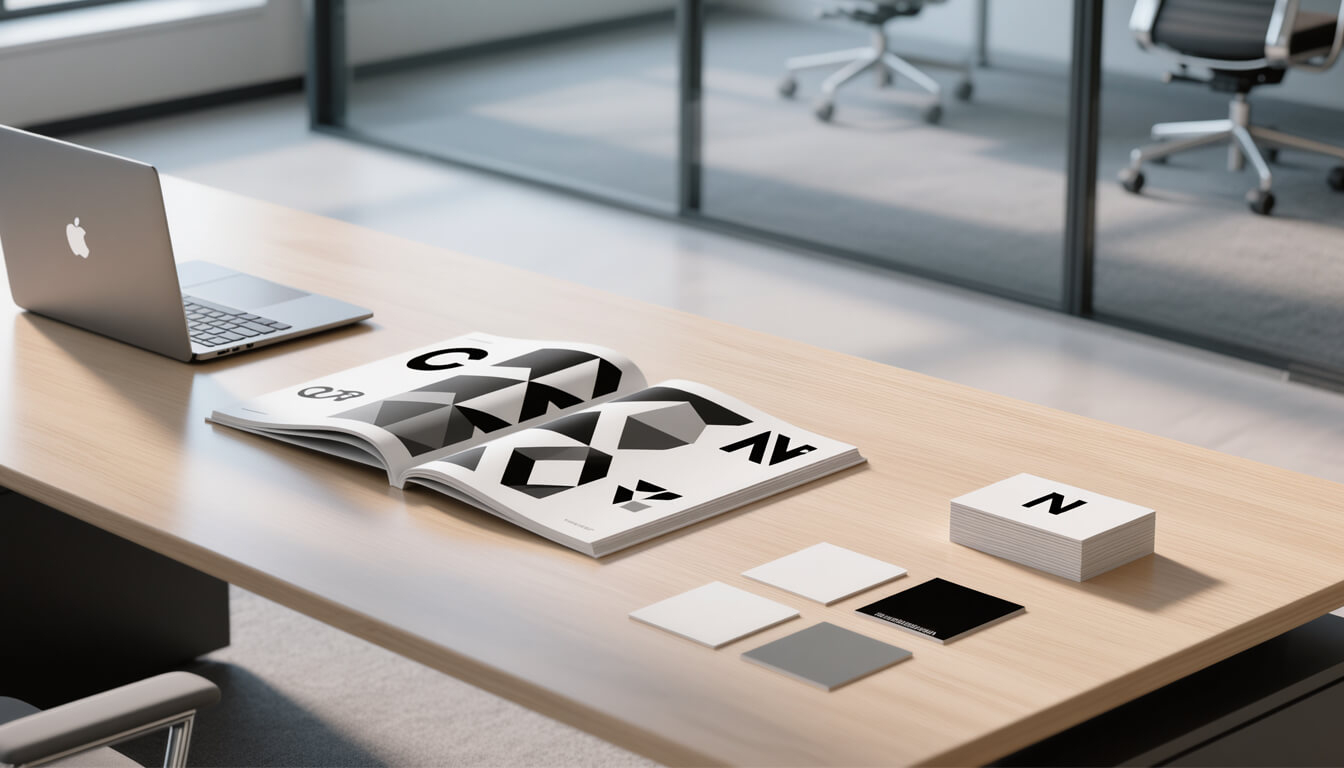A big change is happening in visual design. Quiet leaders are now leading the way in design teams.
These leaders might not always get the spotlight. But they are making a big difference. They work well with their teams, helping everyone do their best. This leads to amazing visual designs.
Looking into visual design, you’ll see quiet leaders changing things. They’re making a big difference in how leading design teams work.
Key Takeaways
- Quiet leaders are changing visual design.
- They focus on teamwork and helping others.
- This approach leads to great visual designs.
- They are leading in design innovation.
- Their impact is felt everywhere.
The Shift from Loud to Quiet in Design Leadership
In design leadership, a big change is happening. Now, we value quiet, subtle designs more than loud ones. These designs are effective and easy to use, without needing to be flashy.
Famous Examples of Attention-Grabbing Design Eras
The 1980s were all about bold, colorful designs. The early 2000s had websites full of animations. These times showed how design can grab attention and make a big impact.
Now, design is moving towards invisible, intuitive experiences. This change is because we want designs that are both beautiful and work well. Quiet leaders in design are leading the way, focusing on usability and clarity over looks.
This change has made design more sophisticated and subtle. It shows that design leadership is about creating lasting, meaningful experiences, not just making a big splash.
Defining the Quiet Revolution in Visual Design
The quiet revolution is changing visual design. It focuses on simplicity and less is more. This change makes things more useful and easy to use.
The Mindset That Drives Effective Restraint
At the heart of the quiet revolution is a focus on restraint and simplicity. Designers now prefer subtle, easy-to-use designs. They understand what users need and aim for a smooth experience.

In today’s design, simplicity is key. Removing extra stuff makes designs clearer and more elegant. This way, designs are not just pretty but also practical and easy to use.
The quiet revolution in design is more than a trend. It’s a big change in how we design. By going with this change, you can make designs that are both beautiful and useful.
Invisible Design: When Success Means Not Being Noticed
The best designs are those you don’t notice. They let users use digital platforms easily. This idea, called invisible design, makes things work well without being seen.
Designing for Seamless User Experience
To make invisible design, focus on the user. Know what they need and how they act. Simple navigation, clear text, and designs that work on all devices are key for a smooth experience.
Make things easy to use and don’t confuse users. This way, they can do what they need without getting stuck on the design.
Digital Platforms That Exemplify Invisible Excellence
Some digital platforms show off invisible design. Google’s search is a great example. It’s simple and works well, letting users search easily without distractions.
Your favorite bank’s mobile app is another example. It lets you manage your money easily. This shows how invisible design makes users happy and keeps them coming back.
Using invisible design, you can make digital products that impress users. They’ll enjoy using your platform without any trouble.
Useful Design vs. Flashy Design: The New Paradigm
Now, useful design is the new norm. It’s all about making things that work well and are easy to use. Designers aim to make things that look good and function better.
The focus has changed from just looking good to making things better for users. Design metrics help us see if our designs are working. Things like how users interact, complete tasks, and convert are key.
Metrics That Matter in the Quiet Design Era
It’s important to watch the right numbers to see if your design is good. Here are some important ones:
| Metric | Description | Importance |
|---|---|---|
| User Engagement | Measures how users interact with your design | High |
| Conversion Rates | Tracks the percentage of users who complete a desired action | High |
| Task Completion Rates | Evaluates how easily users can complete tasks using your design | Medium |
Decision-Making Frameworks for Design Teams
Good decision-making is key in the quiet design era. Design teams should use frameworks that focus on users and data. This way, designs meet user needs and help the business grow.

In this new era, aim to make designs that are both useful and fun. Use the right metrics and decision-making tools. This will help your design team succeed in the quiet design era.
The Pitfalls of Short-Term Buzz Marketing in Design
Short-term buzz marketing grabs attention fast. But, it often costs a lot in the long run. In design, chasing viral moments can make us forget about timeless design principles.
The Hidden Costs of Chasing Viral Moments
Going for viral moments can make your design trendy but not effective. This can make your work shallow and less lasting.
Creating Timeless Solutions in a Trend-Obsessed World
To dodge the traps of short-term buzz, aim for timeless solutions. Know what your audience needs and make designs that last.
In a world that loves trends, it’s hard to resist the latest craze. But, focusing on timeless design makes your work stay strong and meaningful, even after the buzz dies down.
Inevitable Design: Creating Solutions That Feel Predestined
Inevitable design makes things feel right without question. It’s about making solutions so easy and natural. Users say, “Of course it works this way.”
When Users Say “Of Course It Works This Way”
This design makes things simple. Users don’t think twice about a well-designed product or service; they simply use it. This comes from a lot of research and trying again.
When a design feels inevitable, it shows designers got the user’s needs right. It shows the power of design that puts the user first.
To get to inevitable design, you need to really get the user experience. It takes a lot of research and trying again to make it feel right. Designers must keep testing and making things better.
This isn’t just about making something work. It’s about making something that feels right to users. This way, designers make solutions that are not just good but feel like they were meant to be.
By following inevitable design, you can make designs that people love without even knowing it.
Strategies for Leading Design Teams in the Quiet Revolution
Leading design teams in the quiet revolution needs a special approach. You must create a space where less is more. This means using strategies that lead quietly but effectively.
Team Exercises That Promote Restraint and Purpose
To build a culture of simplicity, use team exercises. For example, try “design sprints” to find the simplest solution. Or have designers work in pairs, with one making a design and the other making it simpler.
These activities help teams work together better. They also make sure everyone knows the design’s true purpose.
Communication Techniques for Guiding Without Constraining
Good communication is vital for guiding your team without blocking their creativity. Encourage open talks where everyone feels safe sharing ideas. Ask open-ended questions to spark creativity and keep everyone on track.
With these methods, you can lead your team through the quiet revolution. You’ll create a place where simplicity, purpose, and creativity are valued.
Profiles of Quiet Leaders Transforming the Design Landscape
In the world of visual design, a new kind of leader is making a big difference. These quiet leaders are changing the design world with their fresh ideas and calm leadership.
From Tech Giants to Boutique Studios: Success Stories
Big names like Google and Apple are using quiet leadership. They focus on designs that are easy to use but don’t try to be the center of attention. For example, Apple’s design team, led by quietly influential Alan Dye, makes products that are both useful and look good without being too showy.
Boutique studios are also doing well thanks to quiet leaders. These studios create innovative and subtle work. They meet their clients’ needs without trying to be too flashy. 
Common Traits and Practices You Can Adopt
So, what can we learn from these quiet leaders? They focus a lot on user-centered design. They make solutions that work well and don’t get in the way. They also believe in keeping things simple and clear, avoiding too much complexity in their designs.
By following these traits and practices, you can become a more effective design leader. Embrace the quiet leadership approach. You might find your designs have a bigger impact on your audience.
Implementing Quiet Design Principles in Your Organization
Starting to use quiet design needs careful steps. As a design leader, you are key to making this happen in your team.
A 30-60-90 Day Plan for Design Leaders
Creating a plan is vital for quiet design success. Here’s a 30-60-90 day guide:
Days 1-30: Look at your design steps now. Find where quiet design can help. Talk to your team about their needs and chances.
Days 30-60: Make a plan for quiet design. This includes training, workshops, and clear goals.
Days 60-90: Start the plan, watch how it goes, and tweak as needed. Make sure everyone knows the new design way.
To see if quiet design works, track important KPIs. Some key ones are:
| KPI | Description | Target |
|---|---|---|
| User Engagement | Check how users use your design | Go up by 20% |
| Design Consistency | Look at design element uniformity | Get better by 30% |
| Customer Satisfaction | See what customers think and feel | Get better by 25% |
Focus on these KPIs and stick to your plan. This way, you can make quiet design work in your team.
The Future of Visual Design: Where Quiet Leaders Are Taking Us
The visual design world is changing fast. Quiet leaders are leading the way. They focus on making a big difference, not on getting attention.
Next-Generation Applications of Quiet Design Philosophy
Quiet leaders are bringing new ideas to design. They care about sustainability, accessibility, and making things easy for users. Their designs are beautiful and work well.
To do well in this new world, designers need to be good at feeling others’ feelings, being creative, and knowing tech. They must always be learning and ready to change. Quiet leaders are making design all about meaning, not just looks.
Conclusion: Embracing the Quiet Revolution in Your Design Journey
As you go on your design journey, embracing the quiet revolution can change you. It’s not just a new way to design. It’s about being subtle and effective, not flashy.
Quiet design makes solutions feel natural and right. It helps you focus on what the user needs, not on being noticed.
The quiet revolution is changing how we design. By joining it, you help your team make designs that last. Think about quiet leadership and how it can improve your work.